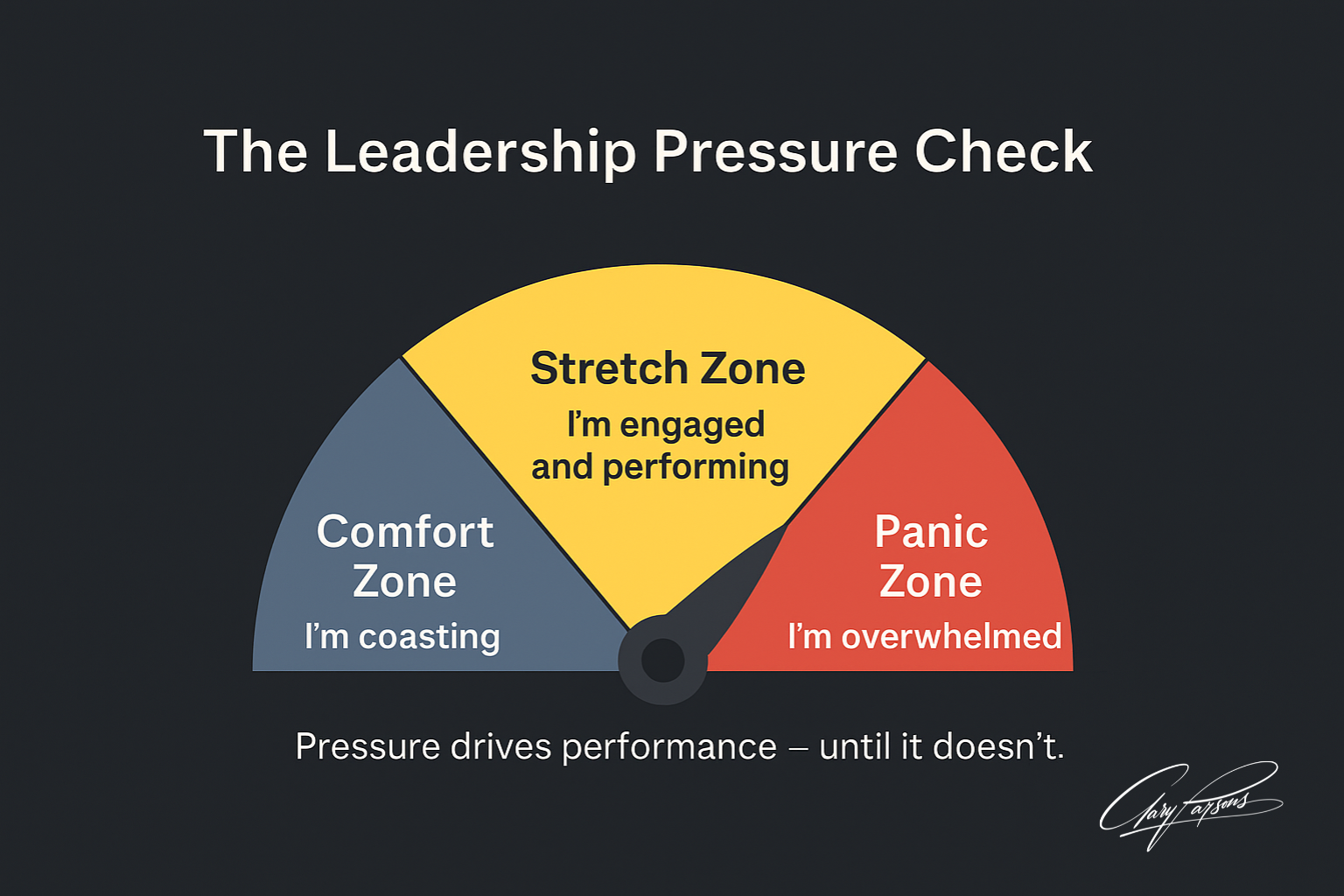The Performance Sweet Spot: Selfish Leaders Thrive Under Pressure

In leadership, a little pressure is inevitable and essential. It sharpens focus, fuels motivation, and drives performance. But there’s a fine line between healthy pressure and harmful stress, and leaders cross it more often than they realise.
That’s where Selfish Leadership comes in. It’s not about neglecting your team – it’s about understanding that you perform best when you prioritise yourself first. When you don’t protect your time, your energy, or your focus, performance turns into pressure – and pressure turns into stress.
The Science of Pressure
Back in 1908, psychologists Robert Yerkes and John Dillingham Dodson discovered that performance increases with stress… but only to a point. Their work, the Yerkes-Dodson Law, shows that once we exceed our optimal level of pressure, performance collapses.
Decades later, Karl Rohnke’s Comfort-Stretch-Panic Zone model made this idea visual. In the comfort zone, we feel safe but stagnant. In the stretch zone, we’re motivated and alert. But in the panic zone, stress overwhelms us, and we start to make poor decisions.
Selfish Leadership is about keeping yourself in that stretch zone, not because it’s easy, but because it’s sustainable. It’s knowing when to push and when to pause – a balance most leaders ignore until burnout forces the issue.
Performance Without the Pressure: The SELF Framework
The SELF Framework gives leaders a way to stay in control of their pressure and energy:
- S – Set Boundaries: Boundaries are the difference between high performance and constant firefighting. Saying no isn’t selfish – it’s strategic.
- E – Elevate Wellbeing: You can’t perform well when you’re running on fumes. Sleep, movement, and recovery are the foundations of smart leadership.
- L – Lead with Intention: When you know your goals, you stop reacting to everything else. Every decision becomes deliberate, not desperate.
- F – Foster Growth: The best leaders stretch themselves and their teams – but never to breaking point. Growth happens when challenge meets capacity.

The Leadership Pressure Check
Every leader’s sweet spot looks different. What feels like thriving to one person might be panic for another. The key is reflection – the hallmark of Selfish Leadership.
Try this weekly:
- Review your activity: How many meetings, hours, or priorities felt productive versus draining?
- Plot yourself on the curve: Comfort, stretch, or panic?
- Adjust consciously: If you’re stuck in comfort, increase challenge. If you’re sliding into panic, recover.
This is how Selfish Leaders protect their performance by regularly checking whether their effort aligns with their energy.

A Culture Shift for Leadership Teams
When leaders burn out, the organisation follows. Too many teams mirror the unsustainable habits of their leaders, which mistakes exhaustion for commitment.
Selfish Leadership turns that on its head. It challenges the outdated belief that sacrificing yourself makes you a better leader. In reality, prioritising yourself makes you a stronger one.
Because when you’re thriving (physically, mentally, emotionally) – your team performs better too.
My Final Thought: Managing Pressure
Pressure is a privilege, but only when you’re in control of it. The moment you lose that control, stress takes over and your performance suffers.
Selfish Leadership helps you stay in command by putting your wellbeing first, setting boundaries, and leading from a place of clarity, not chaos.
So this week, ask yourself:
- Am I performing in the stretch zone or pushing into panic?
- Because thriving leaders don’t just handle pressure – they shape it.
If you recognise that you’re spending more time in the panic zone than the stretch zone, that’s your cue to pause, not push. The most successful leaders don’t wait until they burn out to reset – they learn how to manage pressure strategically. That’s the essence of Selfish Leadership… thriving first, so your team and business can follow. It’s a skill you can learn, and it starts by giving yourself permission to prioritise you.